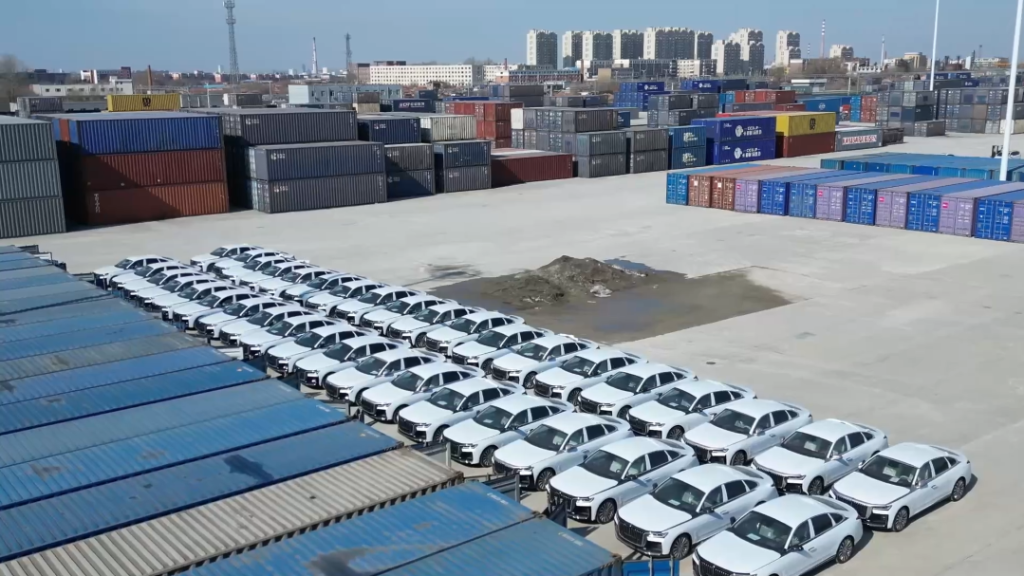SHENZHEN, March 30 (Xinhua) -- China began to upgrade its spallation neutron source, a large scientific facility dubbed as a "super microscope" to probe the structure of the microscopic world, to help boost scientific and technological innovation.
The construction of the phase II of the China Spallation Neutron Source (CSNS), the nation's first research facility providing the most intense pulsed neutron beams for scientific research, was launched in Dongguan city, south China's Guangdong Province, on Saturday.
The CSNS phase II project includes building 11 new neutron instruments, experimental terminals and user laboratories. And the proton beam power of the source, one of the key performance indicators of the facility, is expected to increase from 100 kW to 500 kW, said Wang Sheng, deputy director of the Institute of High Energy Physics (IHEP) under the Chinese Academy of Sciences (CAS), and general director of the project.
The construction of the CSNS phase II is expected to take five years and nine months, according to Wang.
"After completion of the phase II, the source can generate more neutrons at the same time, which means the time of the experiments could be shortened, and the resolution of the experiments could be improved, enabling the measurement of smaller samples and the study on faster dynamic processes," Wang said.
The application scope and capabilities of the CSNS will be greatly improved after the completion of the phase II, and the number of experiments will also increase significantly to assist in cutting-edge scientific research and economic development, Wang added.
The large scientific facility can produce and accelerate protons before smashing them into the target to produce neutrons, and the neutron beams will be directed to hit material samples. Researchers can thus accurately infer the atomic structure of the materials by measuring the distribution of scattered neutrons and their changes in energy and momentum.
Neutron scattering has made a contribution to many areas of physics, chemistry, biology, materials science and materials engineering, where applications range from consumer products to photovoltaic materials and drug delivery.
Construction of the CSNS project started in 2011 under the direction of the IHEP, with a total investment of 2.3 billion yuan (323 million U.S. dollars). Put into use in August 2018, the CSNS is the fourth pulse spallation neutron source in the world after the UK, the United States and Japan.
Currently, the number of registered users of the CSNS has exceeded 6,000, and more than 1,500 experimental projects, including over 100 conducted by users from overseas, have been completed, achieving important scientific results, Wang said.
Focusing on international sci-tech frontiers and serving the country's major development demands, the CSNS has supported research in the fields of energy, physics, materials and engineering, such as studies on aerospace components, lithium-ion batteries, solar cell, rare earth magnetism, high-temperature superconductivity, functional thin films, high-strength alloys and single particle effects on chips, said Zhang Junrong, who is in charge of the user experiments and application of the CSNS project.
"There is an urgent need to upgrade the CSNS to meet the increasing demand of the users," said Zhang, adding that the phase II of the CSNS will support a wider range of research in fields such as magnetic superconducting quantum material, life science, drug development and catalytic material design.
At the launching ceremony of the CSNS phase II project held on Saturday, Lu Fangjun, head of major science and technology infrastructure management department of the CAS, said the CSNS has provided a world-class neutron science research platform for users, and has achieved a large number of important achievements in fields such as new energy materials, aerospace and deep-sea exploration.
The Guangdong-Hong Kong-Macao Greater Bay Area is becoming one of the regions with the most concentrated major scientific and technological infrastructures in China. The CSNS will provide strong support for the upgrading of industrial structure, high-quality economic development and improvement of people's health in the region, Lu said. ■











